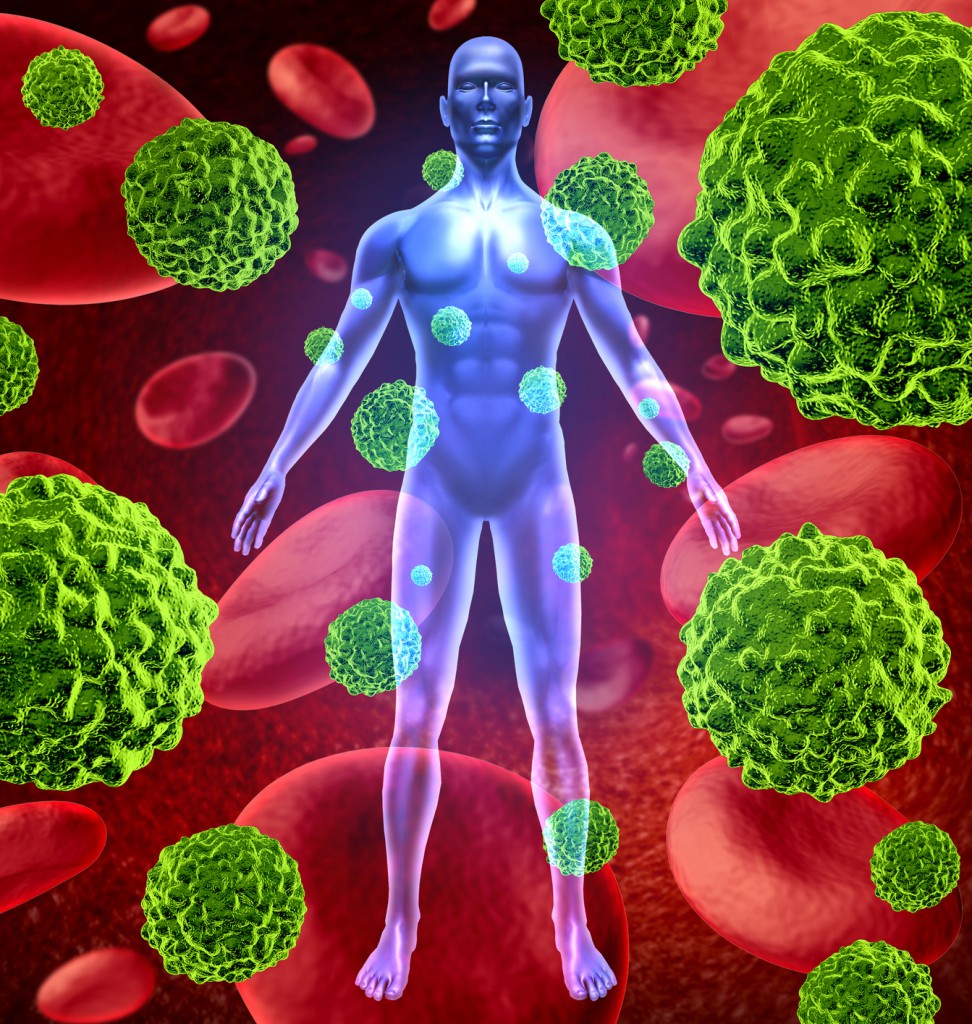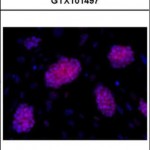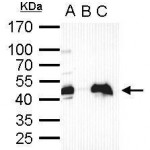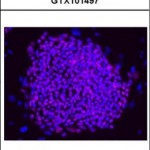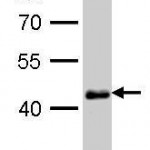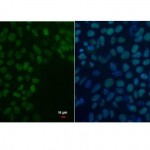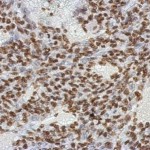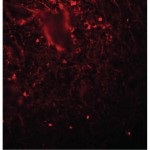Stem Cells: a great tool for biomedical research! From the embryo at a very early stage of development, stem cells have two important capabilities: to multiply to infinity by simple division and to give rise to all kind of cells of the organism. These properties offer many opportunities, not only for the regenerative medicine but also for the study of genetic diseases and development of new treatments.
One of the first thing to do when you’re working on this kind of cells is to check if they are really stem cells, i.e their stemness. It can be highlighted by different markers by IF, WB, etc…
Today, I invite you to look at a popular antibody allowing you to monitor the level of differentiation of your cellular model as well as an innovation related to antibody array and stem cell research.
A popular Stem Cell antibody
OCT4 is a transcription factor belonging to the POU family. It’s one of the constituants of the transcriptional network that regulates pluripotency. It’s expressed in germ and embryonic cells and is involved in the generation of pluripotent stem cells. As such, it is frequently used as a marker for undifferentiated cells.
Here’s a selection of Oct4 and some related antibodies, used and validated by researchers.
- anti Oct3/4 [GT486] (GTX627419): a mouse monoclonal antibody to OCT3/4 (POU class 5 homeobox 1)
- anti Oct4 (GTX101497): a rabbit polyclonal antibody to OCT4 (POU class 5 homeobox 1)
- anti c-Myc (GTX628459): a mouse monoclonal antibody to c-Myc [GT168]
- anti LIN28: a rabbit polyclonal antibody to human LIN28
For translational & clinical studies, the measurement of different stemness factors by traditional techniques, one by one, may pose problems as amount of sample is limited. Use of technologies allowing the simultaneous detection of different biomarkers presents clear advantages. More and more new methods are established to facilitate your work like Safe-Harbor kit , stem cell Antibody Array….
C-Series: Membrane-Based Antibody Arrays
I would like to present a new antibody array recently launched: C-series. This array is very convenient since you can analyze full of markers in a single experiment. The C-Series Arrays utilizes the sandwich immunoassay principle, wherein a panel of capture antibodies is printed on a nitrocellulose membrane solid support (usually 2.5 cm x 3 cm). The array membranes are processed similarly to a Western blot (chemiluminescent readout). Signals are then visualized on x-ray film or a digital image, allowing densitometry data collection and calculation of fold-changes for each detected protein. The entire procedure can be completed in 1 day.
This array allows to detect, in a semi-quantitative form, 15 human stem cell specific targets. These include:
- AFP – Protein expressed during development of primitive endoderm; reflects endodermal differentiation Pluripotent Stem Cells.

- BMPR01A – Marks early endoderm (specially small intestine progenitor cells).
- Brachyury – Transcription factor important in the earliest phases of mesoderm formation and differentiation; used as the earliest indicator of mesoderm formation.
- CD38 – Hematopoietic stem cell marker.
- E-Cadherin – Cell adhesion molecules that marks pluripotency.
- GATA4 – Transcription factor for which expression increases as ES differentiates into endoderm.
- HCG-beta – Growth factor that marks trophectoderm.
- Nanog – Transcription factor crucial for pluripotency.
- Nestin – Intermediate filaments within cells; characteristic of primitive neurectoderm formation.
- Oct4 – Transcription factor unique to PSCs; essential for establishment and maintenance of undifferentiated PSC.
- PDX1 – Marks endoderm and pancreatic progenitor cells.
- Sox2 – Transcription factor that marks neural stem cells.
- Sox17 – Transcription factor that marks definitive endoderm.
- VEGFR2 – Growth factor receptor that marks hematopoietic stem cells.
What’s your method to detect stem cells? What are your needs? Don’t hesitate to contact us to see how we can help to build your project!
Subscribe to newsletters on your topics of interest, and browse this blog regularly to stay up to date!
